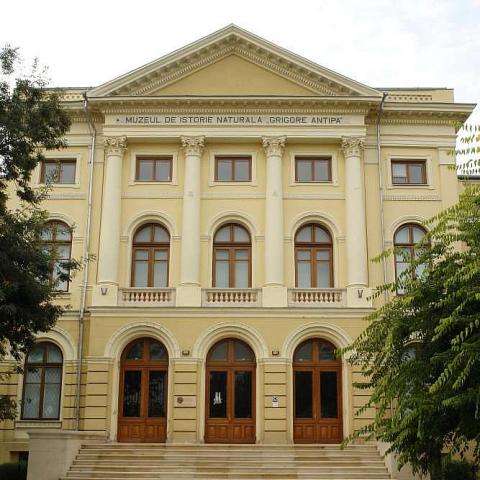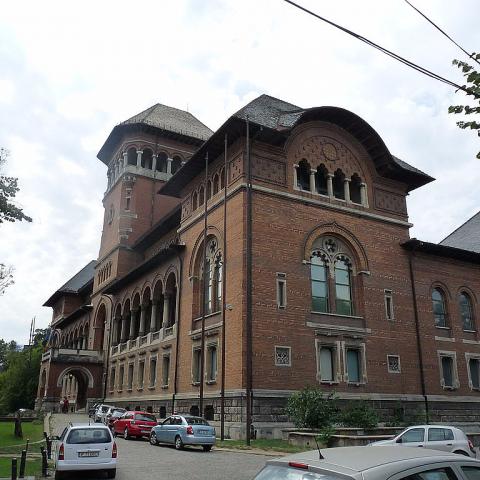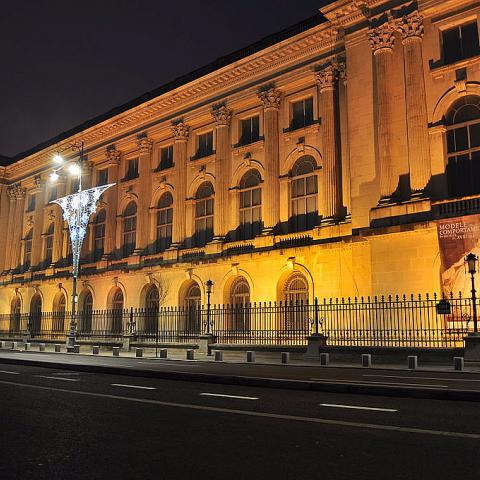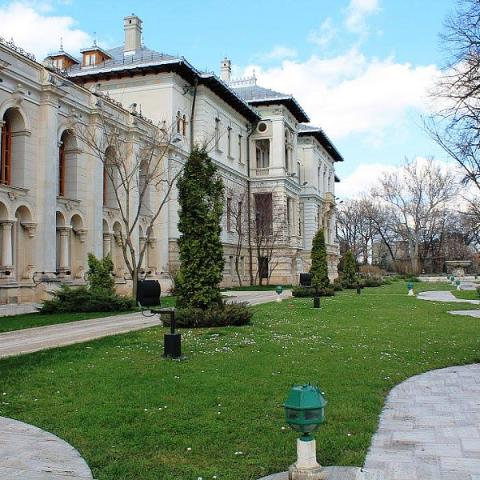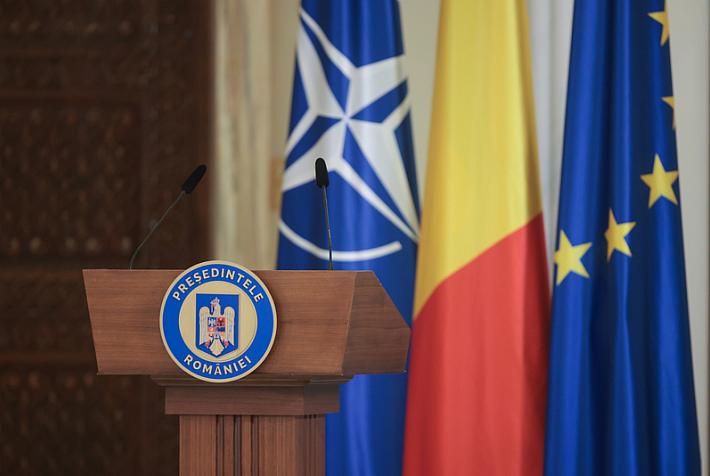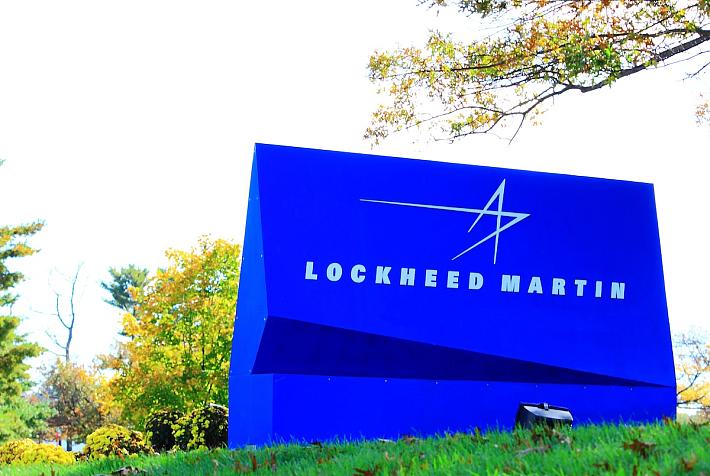Summer special: Bucharest’s museums, the “cool” places to escape the summer heat

Some summer days can be unbearable in Romania’s capital, with daytime temperatures often going over 35 degrees Celsius. So, where to escape the heat? There are the parks, the pools and the waterparks, the shopping malls and the bookshops, but there is always a more interesting way to escape the heat: the museums.
There are plenty of museums in Bucharest that await visitors with their unique items and stories, such as the Antipa Museum, the History Museum, the Village Museum, or the Peasant Museum. Check out this list:
Grigore Antipa National Museum of Natural History
The Grigore Antipa National Museum of Natural History, most commonly known as the Antipa Museum (Muzeul Antipa), is one of the most well-known museums in the capital. It was originally established as a natural history cabinet in November 1834, at the initiative of Prince Alexandru Ghica's brother, the Great Count Mihalache Ghica. However, in 1933, King Carol II decided that the museum should be named after its organizer Grigore Antipa, who was also its director between 1893 and 1944.
The museum, which is located on the Kiseleff Boulevard in Bucharest, was reopened to the public in 2011, after two years of restoration and modernization works. Visitors can check the museum’s permanent exhibition, but also the temporary exhibitions. For example, until September 4, the museum hosts an exhibition of live exotic butterflies.
The Antipa Museum is opened from Tuesday to Sunday, between 10:00 and 20:00. Find more information here.
Dimitrie Gusti National Village Museum
Better known as the Village Museum (Muzeul Satului), the Dimitrie Gusti National Village Museum is an open-air ethnographic museum located in the Herastrau Park, one of Bucharest’s largest parks. It might not be the best choice on really hot summer days, as you’d end up spending the day outside, but it is still one of the places to visit in Bucharest.
The museum’s official inauguration took place on May 10, 1936, in the presence of King Carol II, followed by a public opening a week later, on May 17, 1936. Nowadays, the Village Museum covers some 10 hectares, showcasing the traditional Romanian village life.
This museum might be the perfect place for a summer walk, both for Romanians who want to remember their roots and the foreigners who can get to learn more about the Romanian tradition in a more special way: walking through the old houses (opening picture) and country yards full of flowers.
Find more information about the museum here.
Our Bucharest walks: the Village Museum
Museum of the Romanian Peasant
The Museum of the Romanian Peasant, also known as the Peasant Museum (Muzeul Taranului) is another place where visitors can enter into the old world of the traditional Romania. Located on Kiseleff Boulevard, the museum hosts a collection of textiles, icons, ceramics and other artifacts of Romanian peasant life. Part of the European family of Museums of Art and Popular Traditions, the Peasant Museum was designated European Museum of the Year in 1996. TripAdvisor, one of the biggest tourism promotion websites in the world, also awarded the Certificate of Excellence to the Romanian museum in the summer of 2013.
The Peasant Museum falls under the patronage of the Romanian Ministry of Culture. It was first founded in 1906, and reopened in 1990, soon after the fall of the Communist regime. Read more about the museum here.
National Museum of Romanian History
The National Museum of Romanian History is the place where visitors can go back in time and learn more about all the things that made Romania the country it is today. Located on Calea Victoriei Boulevard, close to Bucharest's Old Town, the museum contains Romanian historical artifacts from prehistoric times up to modern times. Its permanent exhibitions include the Historic Treasury and Trajan’s Column, but the visitors can also choose from the museum’s temporary exhibitions.
The museum is open Wednesday through Sunday between 10:00 and 18:00. The general entrance fee is RON 8, and a guided tour in French and English is RON 10 per group for groups of 1-5 people, RON 15 for groups of 6-10 people, and RON 20 for groups larger than ten people.
Find out more on its official website here (in Romanian).
National Museum of Art of Romania
The National Museum of Art of Romania is located in the former royal palace in Bucharest’s Revolutiei Square, completed in 1837. It hosts two art galleries, namely the European Art Gallery, and the National Gallery (the Romanian Medieval Art Gallery, the Romanian Modern Art Gallery, and the Treasure).
The museum is open Wednesday through Sunday between 10:00 and 18:00. The entrance fee varies depending on the type of gallery you want to visit: RON 8 for the Gallery of European Art, and RON 10 for the National Gallery. A combined ticket costs RON 15.
Find out more here.
Cotroceni Museum
In its 25 years of existence, the Cotroceni National Museum has become an important cultural and touristic landmark of the country, being not only a history museum but also an art and memorial museum. It hosts more than 20,000 items from various areas such as fine arts, decorative arts, history, old books and documents, numismatics, and archeology.
Cotroceni Museum is located in the old wing of the Cotroceni Palace, the official residence of the Romanian President. A complete tour in a foreign language (English, French, Spanish, or Italian) costs RON 50 and lasts about one hour and a half. For a six-person group, the price is RON 400, while students benefit from a 50% discount.
Find our more about the museum here.
Discover Bucharest: Green and quiet – a visit to the Cotroceni museum
Primaverii Palace
Besides the Palace of the Parliament, Primaverii Palace in Bucharest is the place to go for those who are interested in knowing more about late Communist dictator Nicolae Ceausescu. The palace, located in Bucharest’s Primaverii neighborhood, was opened to the public in early March this year, being the mansion where Elena and Nicolae Ceausescu lived the last 25 years of their lives, together with their children Nicu, Zoe, and Valentin.
The palace is open Wednesday to Sunday between 10:00 and 18:00. A standard tour in Romanian costs RON 30 (EUR 6.7) and takes about 45 minutes. A guided tour in English is RON 45 (some EUR 10). Read more about Primaverii Palace here.
Other beautiful museums in Bucharest: the National Bank of Romania Museum, the National Military Museum, the National Museum of Romanian Literature, the Geology Museum, and the National Museum of Contemporary Art.
Irina Popescu, irina.popescu@romania-insider.com







